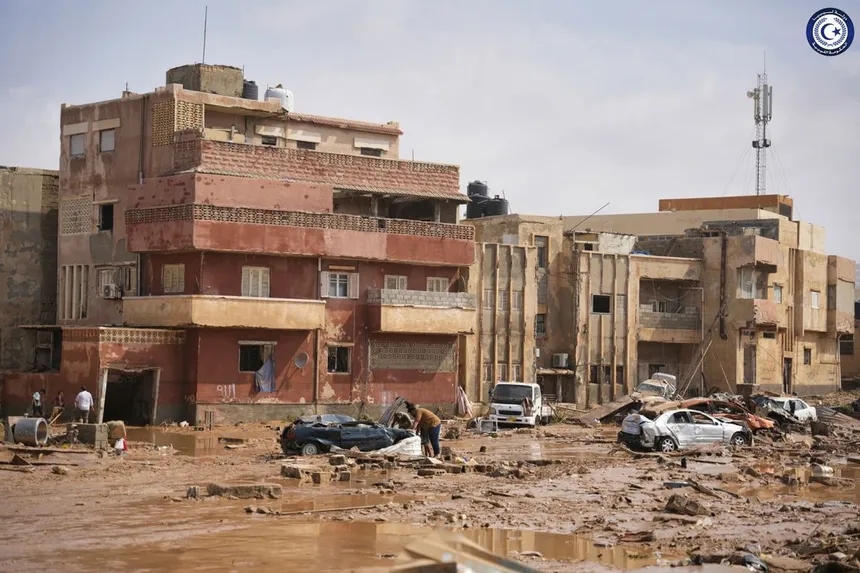The recent flash flood that claimed thousands of lives in Libya this week is a stark reminder of the destructive power of a “medicane”, a rare but intensifying weather phenomenon that scientists believe is a harbinger of things to come in a warming world. A medicane is a Mediterranean hurricane, formed when the warm waters of the Mediterranean Sea combine with the cooler air from higher altitudes to create a swirling mass of storm clouds surrounding an eye. The term may be less well known to the public, but it is a familiar one among scientists and weather forecasters.
The storm that struck Libya, dubbed Daniel, was a textbook example of a medicane. With winds reaching speeds of nearly 170 kilometers per hour, it dumped approximately 170 millimeters of rain in a short period, causing widespread destruction and loss of life. The storm is believed to have been supercharged by climate change, with University of Reading professor Liz Stephens confident that global warming is indeed responsible for the increased rainfall associated with such storms. “We are confident that climate change is supercharging the rainfall associated with such storms,” she said.
According to Suzanne Gray, a professor at the University of Reading’s meteorology department, medicanes tend to form in the autumn when the sea is warm, usually in the western Mediterranean and the region between the Ionian Sea and the north African coast. They form when a layer of cooler air from higher altitudes converges with warmer air rising from the sea around a centre of low pressure.

The formation of medicanes is a relatively rare occurrence, with the US National Oceanic and Atmospheric Administration stating that they occur on average once or twice per year. However, experts say that the warming of sea surface temperatures, driven by human-induced climate change, is likely to make extreme storms like medicanes more intense. Oceans have absorbed 90% of the excess heat produced by human activity since the dawn of the industrial age, according to scientists, and this warming trend is expected to continue.
The Mediterranean, in particular, has seen a significant increase in temperature, with researchers stating that the region reached its highest temperature on record in July. The surface waters of the eastern Mediterranean and Atlantic are two to three degrees Celsius warmer than usual, which would have turbocharged Daniel.
Climate scientist Karsten Haustein of Leipzig University in Germany added that the formation of Daniel is likely a result of warmer sea surface temperatures and hence human-made climate change. “The fact that Daniel could form into a medicane … is likely a result of warmer sea surface temperatures and hence human-made climate change,” he said.
As the world grapples with the devastating impact of climate change, the significance of events like the medicane cannot be overstated. It is a powerful reminder of the importance of continued research and action to mitigate the effects of climate change, and to adapt to the new realities that come with it.

